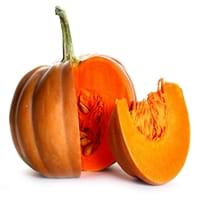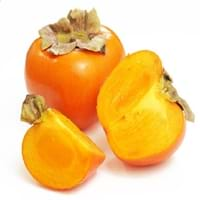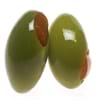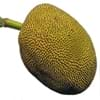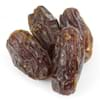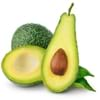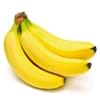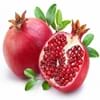Health Benefits
Arthritis treatment, Cancer prevention, High Cholesterol Regulation, Lower blood pressure, Helps Prevent cataract, Prevents gall stones, Ulcer treatment, Weight loss properties
Anti-oxidant properties, Beneficial in curing fever, Cancer prevention, Heart care, Reduces nervous tension
General Benefits
Boosts respiratory health, Eliminate parasites and infections, Protects against birth defects, Strengthens bones
Anti-inflammatory properties, Boosts immune system, Controls blood pressure, Digestive aid, Eye care, Fights against infections, Helps in weight loss, Improves blood circulation
Skin Benefits
Heals sunburn, Hydrates skin, Skin rejuvenation
Anti-aging benefits, Brightens and lightens complexion, Reduces wrinkles
Hair Benefits
Regulates hair growth
Good conditioner, Promotes longer and healthier hair, Treatment of dandruff
Allergy Symptoms
Abdominal cramps, Anaphylaxis, Digestive Problems, Dizziness, Eczema, Fainting, Hives, Inflammation, Itching, Tingling sensation in wrist and face, Vomiting, Wheezing
Abdominal pains, Anaphylaxis, Inflammation
Side Effects
Kidney and gallbladder diseases
Affects blood glucose levels, Decrease in blood sugar levels, Coagulation
Best Time to Eat
Along with meal, Don't eat after meal, Morning time (before lunch)
Along with meal, As a snack in the late afternoon, Don't consume at night and before bed, Eat the fresh ones, avoid mixing with any other foods, don't eat after meal.
Vitamin A (Retinol)
Not Available
Vitamin B1 (Thiamin)
Not Available
Vitamin B2 (Riboflavin)
Not Available
Vitamin B3 (Niacin)
Not Available
Vitamin B5 (Pantothenic Acid)
Not Available
Vitamin B6 (Pyridoxin)
Not Available
Vitamin B9 (Folic acid)
Not Available
Vitamin C (Ascorbic Acid)
Vitamin E (Tocopherole)
Not Available
Vitamin K (Phyllochinone)
Not Available
Lutein+Zeaxanthin
Not Available
Phytosterol
Not Available
Calories in Fresh Fruit with Peel
Calories in Fresh Fruit without Peel
Not Available
Calories in Frozen Form
Not Available
Not Available
Calories in Dried Form
Not Available
Calories in Canned Form
Not Available
Type
Berry
Berry, Tree fruit
Season
All seasons
Autumn, Winter
Varieties
Jarrahdale, Peanut, Lakota, Cow, Sugar, Caribean, Red kuri, Buttercup and Pink lady
Early Golden, John Rick, Miller, Woolbright and Ennis
Color
Blue, Green, Orange, Red, White
Orange, Red, Yellow
Inside Color
Creamy Yellow
Yellow
Taste
Creamy, Soft, Sweet
Sweet
Origin
Mexico
Eastern United States
Soil Type
Clay loam, Sandy loam, Well-drained
Sandy loam, Well-drained
Climatic Conditions
Warm to hot climate
Can tolerate wide range of climates, Sunny
Facts about
- The name pumpkin has its roots in the Greek word ‘pepon’, meaning ‘large melon’.
- The largest pumpkin ever grown weighed 1,140 pounds.
- Pumpkins were once known for removing freckles & curing snake bites.
- It is said that formation of seeds inside the persimmon fruit shows what type of winter is coming(type of snow).
- There are about 2000 varieties of this fruit.
- The American persimmon has another name 'Possumwood'.
Other Countries
Egypt, India, Indonesia, Iran, Italy, Mexico, Russia, Spain, United States of America
Azerbaijan, Brazil, Costa Rica, Japan, Korea, Pakistan
Top Importer
United States of America
United States of America
Top Exporter
China
United States of America
Botanical Name
Cucurbita maxima
Diospyros virginiana
Synonym
Cucurbita pepo, Squash
Not Available
Subkingdom
Tracheobionta
Tracheobionta
Division
Magnoliophyta
Magnoliophyta
Class
Magnoliopsida
Magnoliopsida
Subclass
Dillenhidae
Dillenhidae
Order
Cucurbitales
Ericales
Family
Cucurbitaceae
Ebenaceae
Genus
Cucurbita
Diospyros
Species
Cucurbita mixta
D. virginiana
Generic Group
Not Available
Not Available
Difference Between Pumpkin and American Persimmon
We might think that Pumpkin and American Persimmon are similar with respect to nutritional value and health benefits. But the nutrient content of both fruits is different. Pumpkin and American Persimmon Facts such as their taste, shape, color, and size are also distinct. The difference between Pumpkin and American Persimmon is explained here.
The amount of calories in 100 gm of fresh Pumpkin and American Persimmon with peel is 26.00 kcal and 127.00 kcal and the amount of calories without peel is 30.00 kcal and Not Available respectively. Thus, Pumpkin and American Persimmon belong to and category.These fruits might or might not differ with respect to their scientific classification. The order of Pumpkin and American Persimmon is Cucurbitales and Ericales respectively. Pumpkin belongs to Cucurbitaceae family and American Persimmon belongs to Ebenaceae family. Pumpkin belongs to Cucurbita genus of Cucurbita mixta species and American Persimmon belongs to Diospyros genus of D. virginiana species. Beings plants, both fruits belong to Plantae Kingdom.
